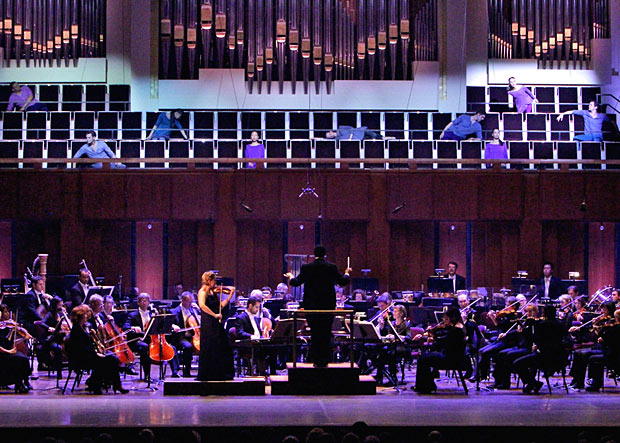
© Kyle Manfredi. (Click image for larger version)
Jessica Lang Dance
Scape
Program 3 of The National Symphony Orchestra: NEW MOVES: symphony + dance season
Washington, Kennedy Center, Concert Hall
16 May 2014
www.jessicalangdance.com
www.kennedy-center.org
www.kennedy-center.org/nso
In the course of the usual week for the National Symphony Orchestra, maestro Christoph Eschenbach might lead the musicians in a traditional classical program, offering such staples of the standard orchestral repertoire as he does this week: a concerto (Brahms’s Double Concerto) and a symphony (Tchaikovsky’s Symphony No. 6). In May, however, the NSO shook things up with its fresh, invigorating and ultimately successful NEW MOVES: symphony + dance – a new and exciting exploration of the collaborative possibilities between a symphony orchestra and a modern dance group. In the course of the two-week festival, the NSO shared the stage of the Kennedy Center’s Concert Hall with three American modern dance troupes (Keigwin + Company, New Ballet Ensemble, and Jessica Lang Dance), each company performing a Kennedy Center/NSO-commissioned piece set to a contemporary composition by an American composer.
Having already commented on the festival’s first two programs, I can now report that the third and final program was nicely balanced, featuring an eclectic selection of American contemporary music with dance at its core.
Michael Daugherty’s dynamic and swaggering Red Cape Tango, the final movement of the composer’s award-winning Metropolis Symphony, opened the evening and proved a perfect introduction to this dance-focused program. I only wished the orchestra produced a stronger sense of swing and punch to express the “tango as a fight to the death” mood of this Habanera-flavored music, complete with pulsating rhythms, bells and castanets.
Conductor Thomas Wilkins and the musicians established a far better rapport in the following piece, Sinfonia No. 4 (Strands) – a concise, one-movement composition by Washington-born composer George Walker, which they delivered with a pleasing tone and touch to accentuate the lucid spirituality of the score.
The main course of the first half of the program was Aaron Copland’s Orchestral Suite from Appalachian Spring, derived from Copland’s seminal work composed for Martha Graham’s ballet of the same title, which was premiered on October 30, 1944 at the Library of Congress in Washington, D.C. The ballet as well as the music became an important turning point in the history of American culture, the epitome of Americana in music and dance. Even though the ballet’s music has a life of its own as a concert suite, during the performance I missed seeing Graham’s choreography, which ultimately gives Copland’s melodies not only a visual form but also a beating heart.
The program’s main draw, however – and the festival’s culminating number – was the world premiere of Scape, aballet created by American choreographer Jessica Lang and performed by her company, Jessica Lang Dance, in its Washington D.C. debut.
Lang, a Juilliard-trained dancer and a former member of Twyla Tharp’s touring troupe, THARP!, has been creating dances for more than a decade, working with ballet companies around the world as a freelance choreographer. Her résumé lists nearly 80 works, including commissions for Birmingham Royal Ballet, Joffrey Ballet, Pennsylvania Ballet and the National Ballet of Japan.
To give her creativity a permanent home, Lang founded her own New York-based company, Jessica Lang Dance (JLD), which made its official debut at Jacob’s Pillow Dance Festival in 2012.
JLD is a relatively young troupe, but it consists of nine experienced and established dancers, some of them well-known and admired in Washington. Take for example, Clifton Brown, a JLD member and also the company’s rehearsal director. For many years he captivated Washington audiences with his towering presence and unique grace as a star dancer of Alvin Ailey American Dance Theater. Kirk Henning is another familiar face. He is a soloist with the Kennedy Center’s Suzanne Farrell Ballet and has become a permanent fixture of this company’s annual season at the Eisenhower Theater for the past few years.
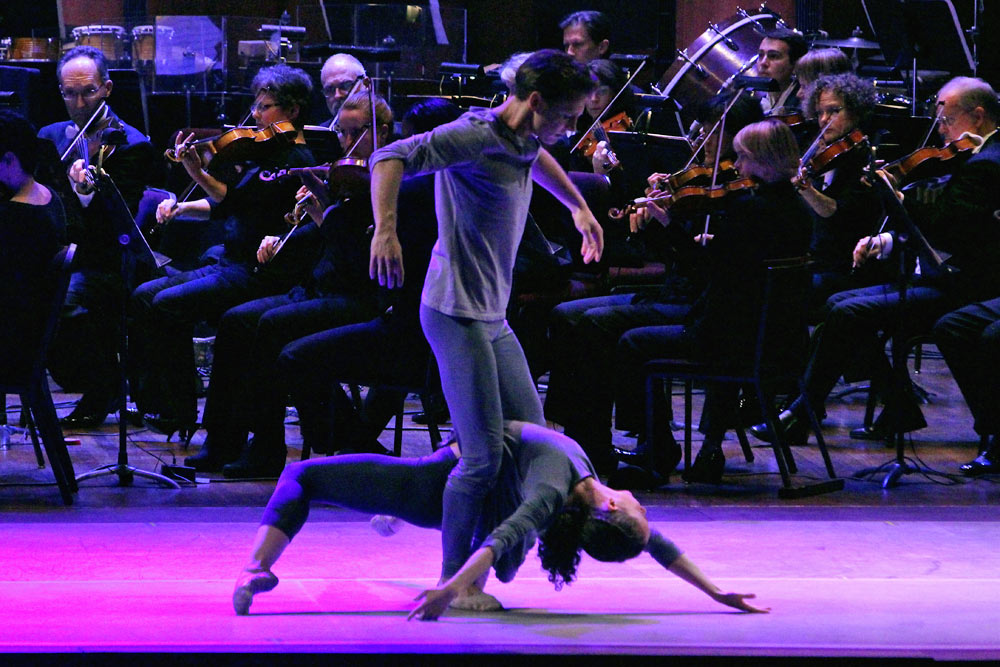
© Kyle Manfredi. (Click image for larger version)
Lang’s movement style has a beautiful, sculptural feel and shows her affinity for the novel and unexpected. In Scape, she demonstrates a keen architectural eye and unbound imagination, in addition to her versatility in classical and modern idioms, creating a visually absorbing dance – an apt realization in motion of the rhythmical and sonic intricacies of John Adams’s Violin Concerto.
The concerto was a joint commission from the Minnesota Orchestra, the London Symphony Orchestra and New York City Ballet. NYCB’s ballet master-in-chief, Peter Martins, created an eponymous ballet to Adams’s score, which premiered in 1995. Even though Adams’s music was composed with balletic movements in mind, it would be a stretch to call it perfectly danceable – especially its opening movement. The music is a mix of jazzy improvisations and wistful sonorities, which intensify and recede in a wave-like fashion. Percussion and synthesizer provide a series of piercing effects while the violin soars above the minimalistic soundscape.
Scape, just like the concerto, has three clearly defined parts. The opening begins above the stage, with four men and five women, one by one, appearing in the chorister seats. They are dressed in soft, pajama-like costumes in purple, blue and green hues and their movements are as minimalistic and relaxed as their dance attire. The choreography deftly combines stillness and movement as the dancers engage in slow-motion permutations, dispersing across the rows or clustering in the center; or, like a cheerleading squad, executing synchronized hand gestures in perfect unison. The eerie music adds to the overall strangeness of this highly unusual but at the same time deeply captivating dance. At one point, a woman daringly leans over the railing as the rest of the group congregates around her in an elaborate formation. At a later point, the dancers appear on both sides of the choir area, pressing with their hands on the walls of the side boxes as if trying to break free from the space which confines their movements. As the violin’s solo takes its flight, all the dancers but one slowly disappear from view, descending onto the stage. They stand still and listen in rapt silence as the violinist (the excellent Leila Josefowicz) continues her ardent musical journey.
The second movement brings all the dancers onstage. The music tempo changes from a nearly perpetual drive to a melancholic tranquility, with the melodic lines of the violin gently woven into the complex rhythmical tonalities of the orchestra. The choreography responds in kind, with the dancers creating a breathtaking display of continuously evolving sculpture-like formations and intricate patterns, their movements measured and well-defined as if echoing Adams’s title of this movement: “Body through which the dreams flow.”
The third and final movement takes off in untamed frenzy, bringing back the non-stop dynamics of the opening while upbeat folksy tunes immediately establish a wild, party-like atmosphere. This buoyant mood is echoed in the choreography as the cast fervently zooms about the stage, their speedy footwork neatly matching the playfulness and syncopated outbursts of the music. This section is a showcase of musical athleticism and proves the ultimate test of the violinist’s stamina and agility as well as those of the dancers.
The JLD dancers were in excellent form, bringing out the sophisticated visual realization of Adams’s concerto with skill, assurance and confidence. Violinist Leila Josefowicz, known for her special affinity to this concerto, was simply astonishing. Hers was a powerful, high-energy performance that accentuated the music’s sinister edge and its solemn, unconventional beauty.









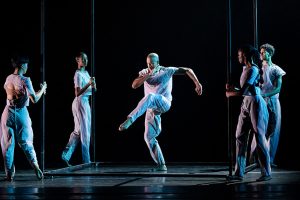

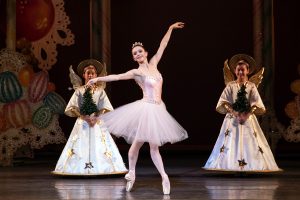
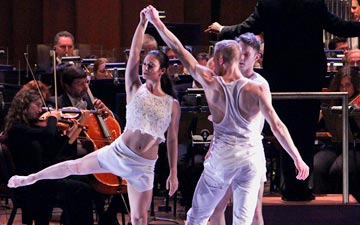
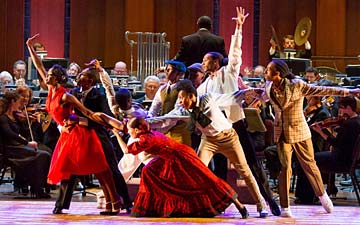



You must be logged in to post a comment.